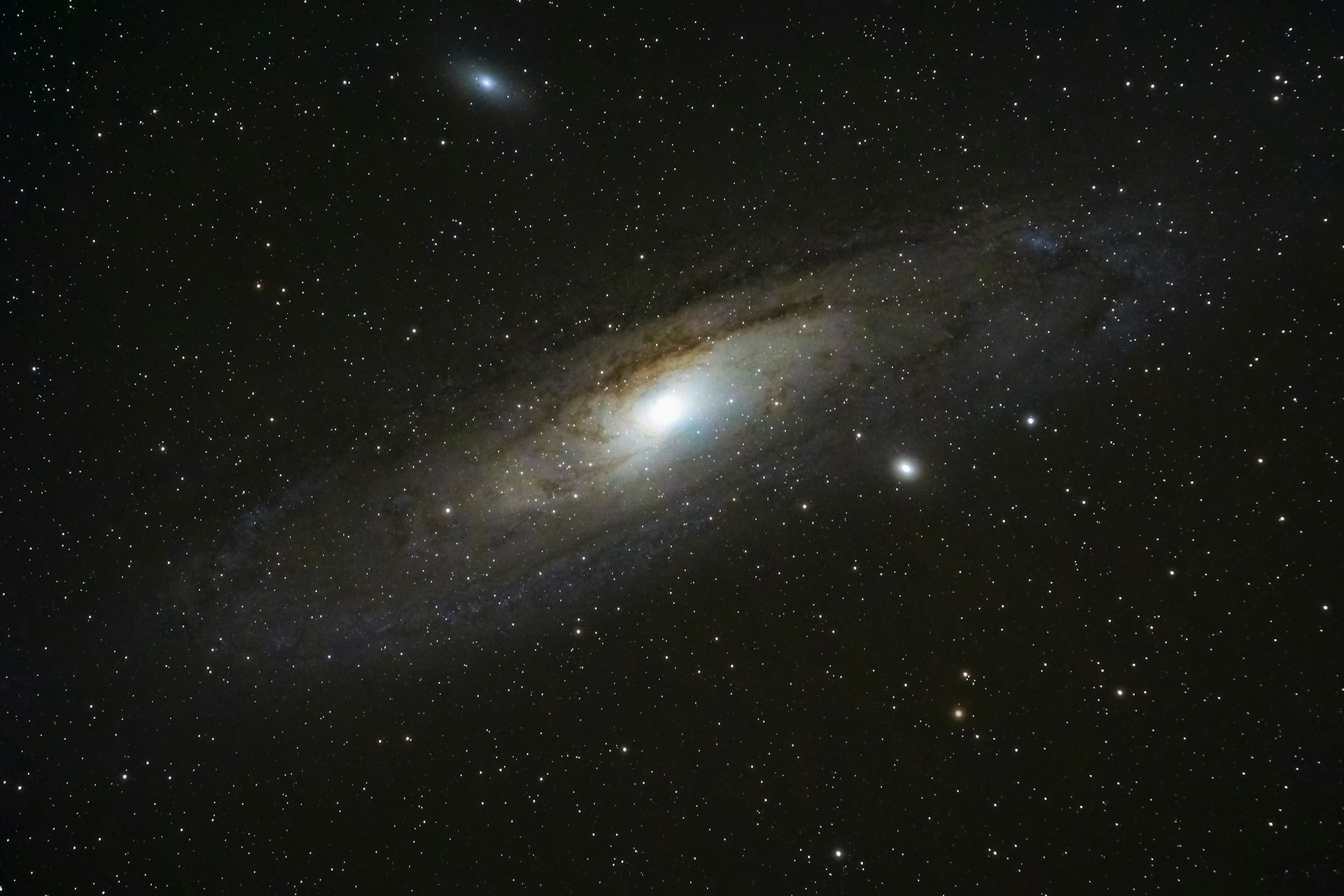Christopher Nolan’s take on the life of J. Robert Oppenheimer. Image credit: Flickr, CC BY-SA 2.0.
Warning: contains mild spoilers.
As a fan of Christopher Nolan’s work, I was excited to hear about the release of a new film. The hype surrounding Oppenheimer only added to this, and I was interested to see how Nolan would approach the science, as well as the life of the title character.
The audience are propelled straight into the mind of the theoretical physicist J. Robert Oppenheimer as the film starts. The now infamous quote ‘Now I am become Death, the destroyer of worlds’, taken by Oppenheimer from Hindu scripture, was certainly due to make an appearance. Nolan’s choice to put this at the beginning of the film instantly raised the point of the ambivalence surrounding such a weapon–a concept continued throughout. This manner of cycling through time is a key theme in much of Nolan’s work, so die-hard fans are not to be disappointed.
This manner of cycling through time is a key theme in much of Nolan’s work, so die-hard fans are not to be disappointed.
The three-hour epic takes us on a tour of Oppenheimer’s life from the 1920s to into the 1950s. He is played by the incredibly well-cast Cillian Murphy, who shows us the many shades of his character. The film is punctuated by cuts to two key events in Oppenheimer’s later life. The first is his own security hearing, in which his loyalty to the United States is questioned. The second event (a Senate Selection hearing) follows a similar vein in discrediting Oppenheimer but surrounds the thoughts of Lewis Strauss, an American businessman and chair of the Atomic Energy Commission. These events both serve somewhat as flash forwards, against which we see Oppenheimer’s earlier life, his time as a teacher, and ultimately his time on the Manhattan Project (the codename for the top-secret endeavour to create an atomic bomb).
As the film progresses, the speed at which we flip between different times slows. This perhaps reflects a growing confidence within Oppenheimer, which is evident in Murphy’s characterisation of him. In contrast, the time jumps at the beginning and close to the film’s conclusion are fast-paced and disorientating, revealing the character’s dilemmas surrounding his future, his personal life and the use of the atomic bomb.
The use of recognisable faces in both main and secondary roles was a good choice. Murphy acutely portrays the character’s relationships and the ageing of Oppenheimer through changes in posture. Robert Downey Jr. is exceptional as Lewis Strauss, carefully depicting the two sides of his character. Matt Damon also gives a strong performance as Lieutenant General Leslie Groves, the man who headed the Manhattan Project and recruited Oppenheimer as director.
Audiences can feel comfortable while watching known talents, allowing them to immerse themselves in the bigger questions the film tackles. It also brings a sense of familiarity to the setting, almost as if these events could be anywhere, involving us and the people we know. Immersing the audience in this familial feeling emphasises the sense of camaraderie explicitly expressed by the script and also the distress of leaving your previous life behind. This latter feeling is encompassed in Oppenheimer’s wife, Katherine Oppenheimer Vissering, played by Emily Blunt. In this way, Nolan proposes us with a question—what would you have done?
In this way, Nolan proposes us with a question–what would you have done?
Visually, the film is spectacular. At first, I found myself trying to work out what the use of black-and-white for Strauss’ hearing symbolised. Ultimately, I found it very effective, particularly when later I discovered the intention was to separate perspective. With all third-person/non-Oppenheimer scenes in black-and-white, it expressed the uncertainties surrounding his reputation and prestige. Recurring images of light and flames was stimulating and lent well to the encroaching and inevitable use of the atomic bomb on Hiroshima and Nagasaki. The cinematography, managed by Hoyte van Hoytema, was outstanding. This is particularly apparent in the scenes set at Los Alamos, which is the makeshift town serving as the location of the Project.
Sound is used fantastically to build tension. The event of the Trinity test—the first experiment to examine the potential of an atomic bomb—is a key example of this in the film. At its climax, the natural delay of sound from light is used powerfully to emphasise the wonder of the people of Los Alamos at the sheer sight of the mushroom cloud. As I watched, I too was bracing myself for the bang, and when it hit, the audience’s relief paralleled that of the scientists, who finally let themselves celebrate what they have achieved.
With a distinct portrayal of the struggle in scientific discovery, Nolan captures what it is like to be under pressure to find answers.
With a distinct portrayal of the struggle in scientific discovery, Nolan captures what it is like to be under pressure to find answers. The marvel of the first ever success in splitting the atom (performed in 1938) is well-appreciated and propels a sense of adrenaline clear in the scientists on screen. This feeling continues throughout the beginning of the Manhattan Project.
Whether fact or fiction, I found the image of dropping marbles into a glass bowl to represent collected uranium clever and intriguing. Not only does the growing addition of marbles give a sense of acceleration to the project but it also makes the scientific activities seem somewhat trivial, as if the drive towards scientific discovery is blinding the scientists to the reality of the situation. This becomes especially clear when, after the initial bombing, we are shown images of the scientists at Los Alamos, the realisation of what they have truly created dawning on their faces countered with the pride of success.
The contemplation on the historical significance of the “Einstein–Szilard” letter is particularly moving in this light of striving for scientific success. Einstein himself, portrayed by Tom Conti, is played as a rather sad character in the days after the highs of his career. His character symbolises the aged scientist, which is ultimately mirrored in Oppenheimer at his later stages of life. The two have a conversation near the end of the film about what they will be remembered for—they discuss Einstein’s letter and the atomic bomb. In the knowledge acquired of Oppenheimer’s earlier life in the opening stages of the film, I could not help feeling sympathy here. Nolan takes us on an emotional rollercoaster, and these mellow moments are particularly poignant.
As an audience, we are left to ponder how much further science will take us, and whether the black hole will continue to pull us all along for the ride.
I also enjoyed the recurring idea of black holes, which Oppenheimer proposed an idea for before they were coined years later by John A. Wheeler. On a shallower level, I liked how Nolan included this, as it really expressed the innovative and brilliant mind Oppenheimer possessed. When assessed more deeply, this motif of ceaseless gravity—an explosion leading to a void that pulls in everything around it—was clever. The creation and use of the atomic bomb impacted the lives of many. Those in the vicinity of its creation at Los Alamos and beyond were forever impacted by those moments of their lives, portrayed spectacularly by Emily Blunt and others connected to Oppenheimer, such as his lover Jean Tatlock (Florence Pugh) and his close friend, the literature professor Haakon Chevalier (Jefferson Hall).
A certain scene sticks in my mind: Oppenheimer stands at a podium with the crowds cheering around him. He struggles with their joy, clearly in a moral dilemma, and cheers turn to screams, people’s faces begin to peel away. It is horrific but makes a strong impression. The people at Los Alamos will forever be connected with the massacre that resulted from the dropping of the atomic bomb. They are stained just by association.
The idea extends to the victims of the attack too. Many were killed in the original blast but, as highlighted in the scenes of Oppenheimer’s questioning, many also died later from the aftermath of the bomb, such as by radiation poisoning. Nolan succeeds in highlighting the horror of such a weapon, encouraging the conversation around the use of nuclear weapons in our own time. In the view of historian Alex Wellerstein, this makes the movie a ‘great success’.

This sense of doom is heightened in the recurring idea that there was a slim chance that the bomb may ignite the atmosphere. When he is told chances are ‘near zero’ that this would occur, Oppenheimer is clearly uncertain. Later, however, he is the one convincing Leslie Groves of the almost guaranteed safety. This shows us the development of his character explicitly, like he has no choice now but to be confident in the project. These changes oppose the alteration in the confidence of Groves, and his line stating how ‘zero’ chance of world destruction ‘would be nice’ encapsulates how the audience has begun to feel about the events at Los Alamos.
Oppenheimer’s opinion around the use of the atomic bomb as Manhattan Project director is discussed extensively in the film. While touching on his previous endorsement of the atomic bomb, Nolan chooses to focus on Oppenheimer’s viewpoint of banning nuclear weapons. This is clever, because it forces the audience to see both viewpoints no matter their own opinion.
The casting of Murphy further lends to this point. Both sides of the argument are portrayed by a largely well-liked and charming actor, intensifying the charm Oppenheimer may have had in his life with those around him. There are some ambiguities in the film surrounding how Oppenheimer feels about the Hiroshima attack. In reality, he votes twice in favour of it—a detail missed from the movie. Perhaps here, Nolan is giving us a more likeable primary figure, through which we can investigate and bounce off our own opinions. After all, if the main character was unlikeable, we wouldn’t watch the film and reflect on its deeper message.
Any large-scale scientific endeavours will inevitably alter the world we live in, be it for better or for worse.
The slight downfall of the film is its length. The script encompasses much of Oppenheimer’s life, and there are not any scenes wasted. However, the heavy topics and mental stimulation is overwhelming to a degree, particularly in the sections after the Trinity test occurs.
Further, while we see the female physicist Leona Woods Marshall Libby, there are many more female scientists who played a part in the Manhattan Project that we do not see. Of course, we must consider that there are several scientists “full stop” who were involved that do not get any screen time, but the women on screen do heavily feature in the more secretarial roles, with little mention of them as scientists. Nolan makes the decision to focus on Oppenheimer and his point of view, therefore his circles, so it is understandable that we miss certain work. The film certainly does not negate the hard work of every scientist involved, even if we do see everything through only Oppenheimer’s eyes.
Nolan delivers to us a powerful contemplation of the morality of such a weapon. Any large-scale scientific endeavours will inevitably alter the world we live in, be it for better or for worse. Such terror can bring us brilliance, such as the creation of prosthetic limbs for soldiers of the First World War and the harnessing of nuclear power as a sustainable energy source. However, it can also bring us great uncertainty. By touching on the opening stages of the Cold War period, Nolan gives us an image of never ending “one-upmanship”. Science is fantastic in so many ways, and yet with repeated mentions of the ‘H bomb’ throughout the second half of the film, there is a sense of jeopardy and the looming threat of a nuclear war.
We are not beyond this, so Nolan’s use of his craft to touch upon this subject is very powerful. As an audience, we are left to ponder how much further science will take us, and whether the black hole will continue to pull us all along for the ride.





